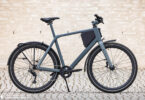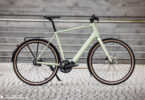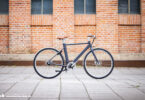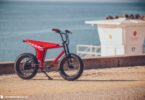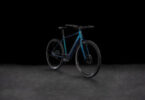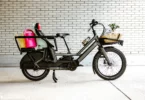The venerable English brand Brompton have sent the M6L version of their classic folding bike into our big commuter bike group test. As the only non-motorised bike, the compact M6L enters the ring as the underdog. Can it overcome the missing E-support with its clever folding mechanism?
Get an overview of the grouptest here: The best ebike of 2021 – The 19 most exciting concepts for everyday use
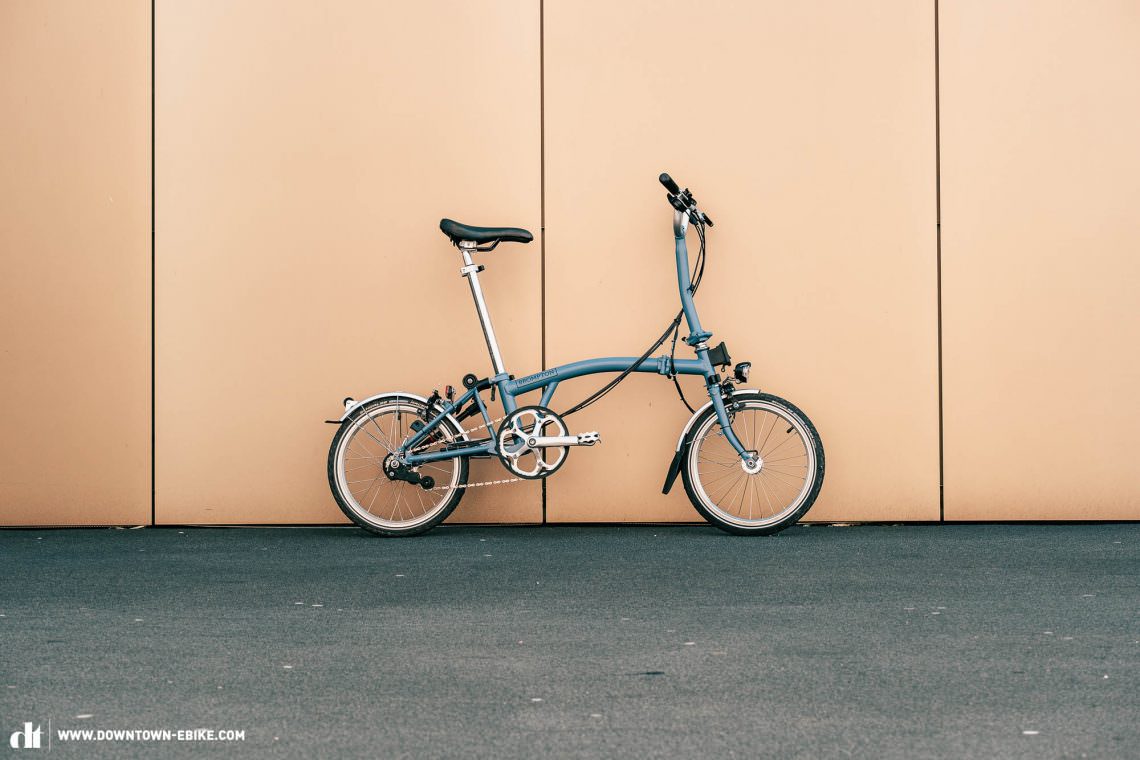
12.60 kg | € 1,785 | Manfacturer’s website
No one else dictates how you live your life. You live it fast, consciously and intensely. Success and control are important to you in both your job and in private. You’d never be seen cruising across town on a folding bike. In your eyes, anyone who swaps a sports car for a bicycle is a loser. A pity! If you stay fixed in your ways, you’ll miss it – the ease of urban mobility aboard the Brompton. And if it were only about sales figures, then the Brompton folding bike would be a winner already! There’s no other British manufacturer that produces as many bikes a year as Brompton. In many ways, the Brompton is a frontrunner and unique in our group test: it’s the only bike that forgoes a motor and the frame is constructed from steel instead of aluminium or carbon like the competition. At 12.6 kg, it’s the lightest bike in the test and with its 16″ wheels, also has the smallest tires. Ready to ride, it is the most compact bike on test and when folded together, the Brompton is the only bike that fits the loading bay of the Riese & Müller, the biggest bike tested here. On top of that, the Brompton gives you access to one of the most exclusive races on two wheels: the Brompton World Championship. Adhering to a strict dress code, for example, a jacket with a (bow-)tie for the men, Brompton races are organised worldwide, serving as qualifiers for the annual World Championship in England. A no brainer then for us to engage our strongest colleague for the task: Thommi can bench press 100 kg and will use all his might to turn the pedals of the British pocket rocket.
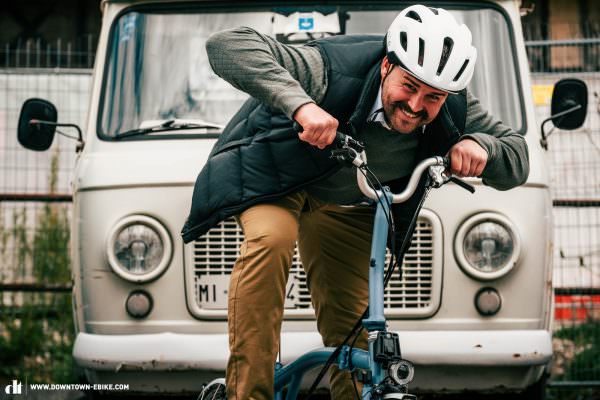
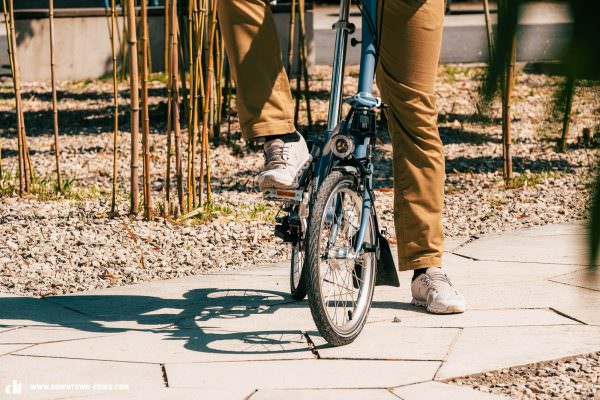
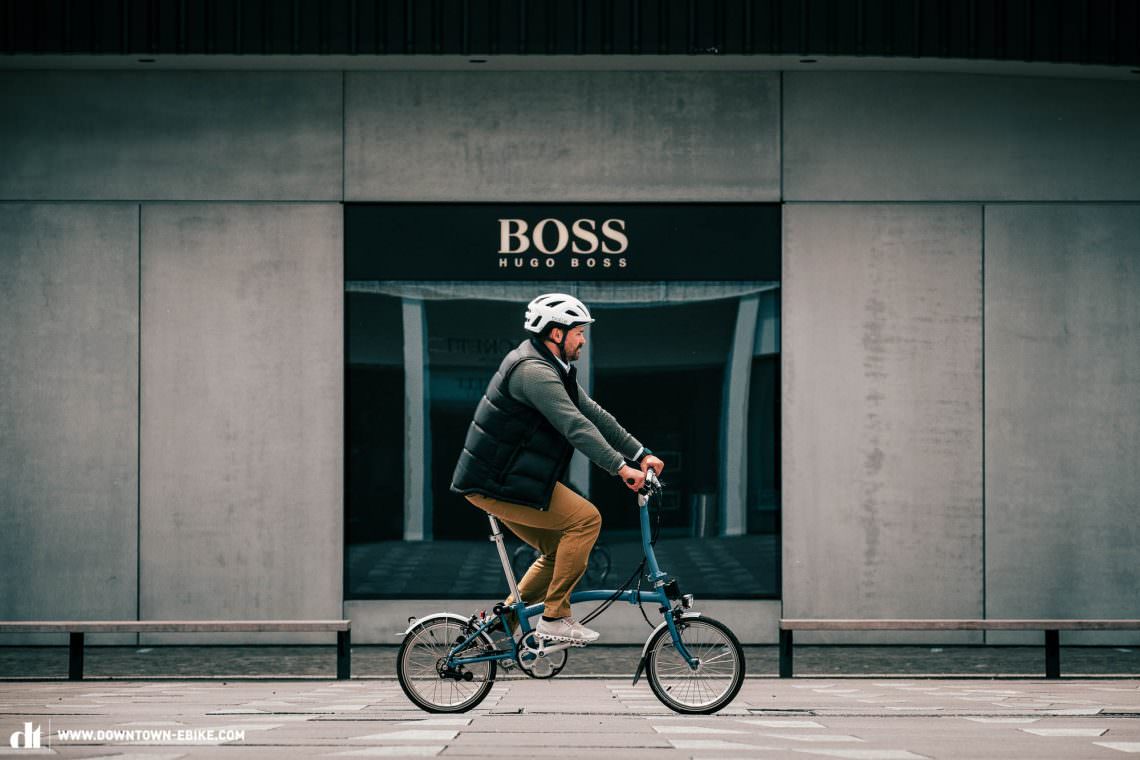
Brompton M6L spec in detail
Brompton’s frame design and folding mechanism have remained largely unchanged for decades. Nonetheless, the details of the individual bikes in the portfolio have been fettled and fine-tuned for more than 30 years, which is noticeable in the number of clever solutions present. The M in the model’s designation identifies the traditional, high-rise and narrow bars. The 6 denotes the 6-speed drivetrain consisting of a 3-speed gear hub and two sprockets at the rear. Thanks to the gear hub, you can shift into an easier gear for setting off even when you’re at a standstill at the lights. The L denotes a spec that includes mudguards. The front guard is also equipped with a mud flap ensuring dry feet even through bad weather.
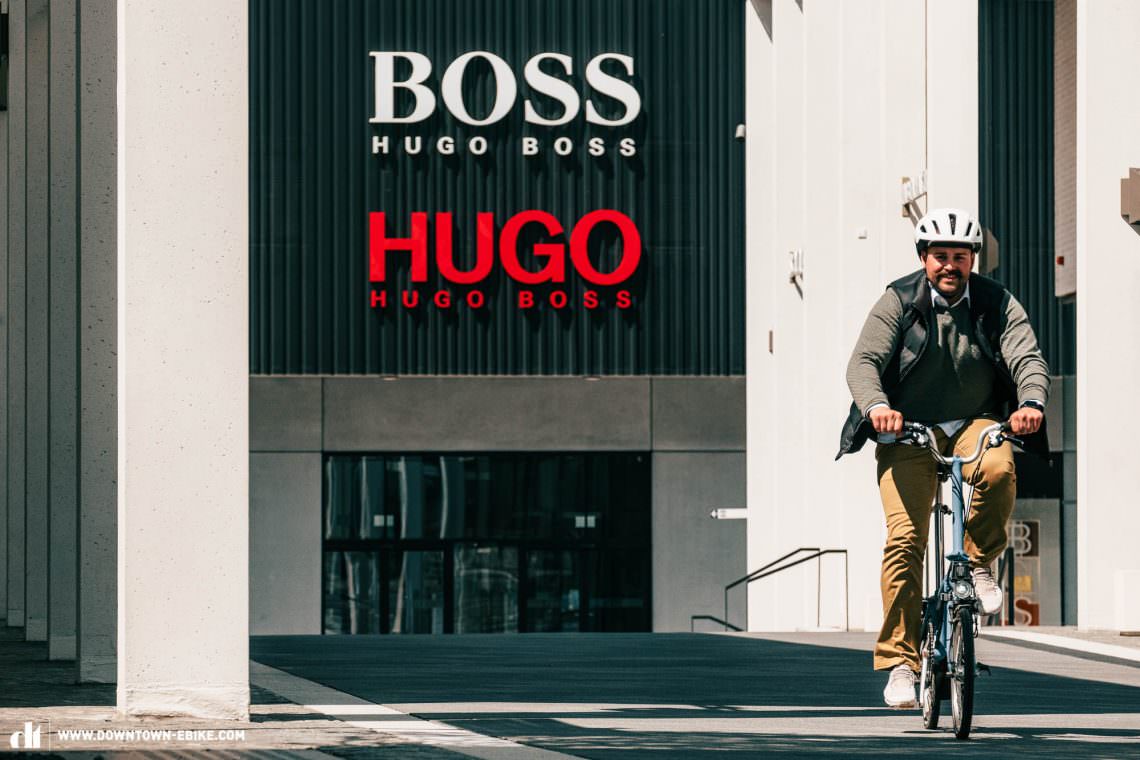
Many bikes in the test offer additional bags, but only for the Brompton is there literally just one bag.
All cables are routed externally, take big loops and are held in place with lugged cable stops in a number of places, meaning that nothing can get trapped or pinched when folding the bike together. Classic rim brakes do the braking and these provide sufficient power for the intended application of the Brompton. The front and rear light ensure good visibility, with both powered by the dynamo hub. There’s even space for a small Zéfal mini pump on the rear end. For the saddle, Brompton spec an all-weather C17 from Brooks, another storied British brand, who actually boast a history older than the bicycle itself. Aside from the version we tested, the folding bike is also offered as a version with a front hub motor and battery in the front rack as the Brompton Electric, or as the Brompton Superlight with a lightweight titanium fork and rear end.
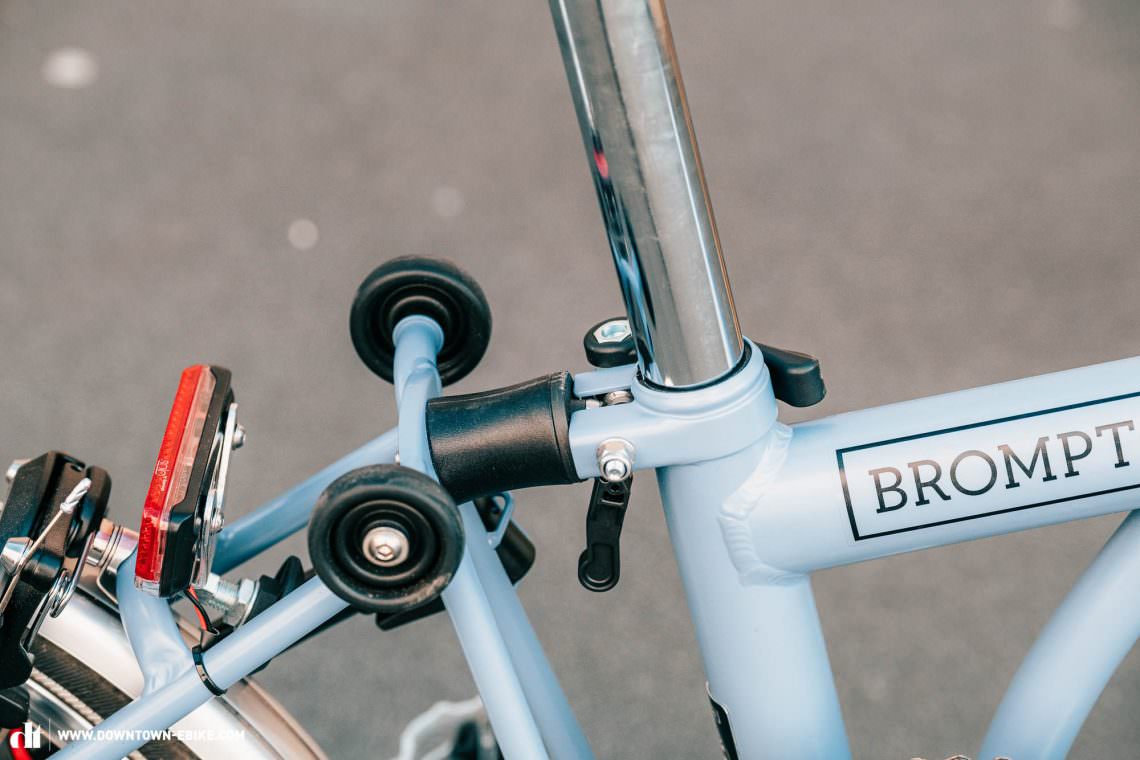
The elastomer between the seat tube and rear end helps with a lot of the comfort in the saddle.
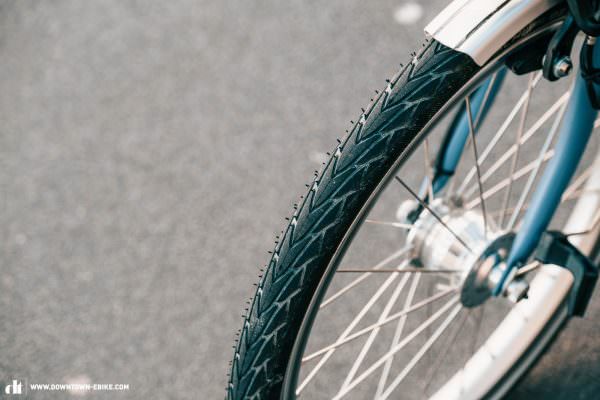
The small and narrow tires aren’t made for bumpy surfaces. You’ll also have to pay attention when crossing train or tram tracks.
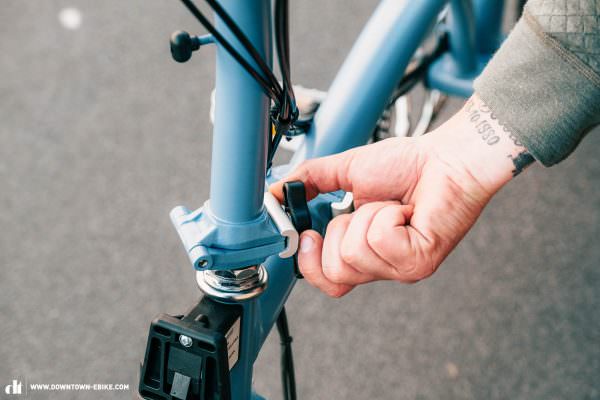
In four steps, the Brompton transforms from a bike to a handbag. The folding mechanism of the bike is so clever that even James Bond would put a Brompton in the boot of his Aston Martin.
Brompton M6L Cloud Blue
€ 1,785
Specifications
Motor -
Battery -
Display -
Fork -
Brakes Rim brakes
Drivetrain Sturmy Archer 2x3
Tires Schwalbe Marathon Racer 16 x 1 1/3"
Technical Data
Size L
Weight 12.60 kg
Specific Features
lighting system with front hub dynamo
foldable frame concept
air pump mounted on frame
rim brakes
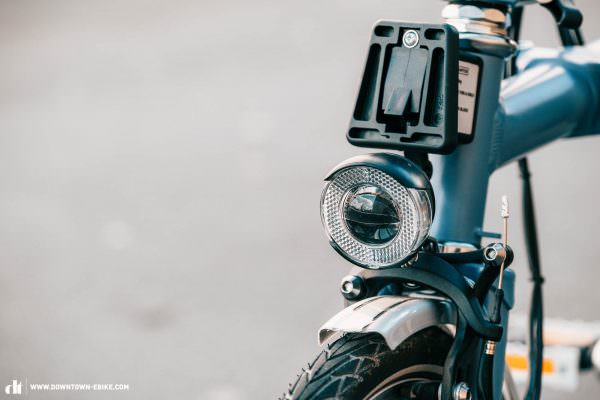
The spec on our mini leaves few wishes unfulfilled. Mudguards, lights and a rack for luggage come as standard.
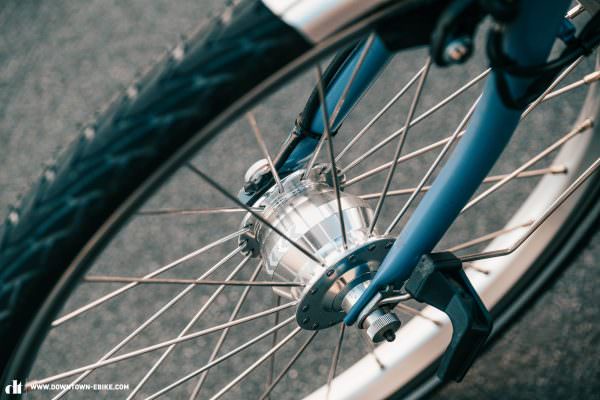
There’s no motor or battery on the Brompton, but power for the light is produced by the dynamo and is powerful enough at low speeds for good visibility in the dark.
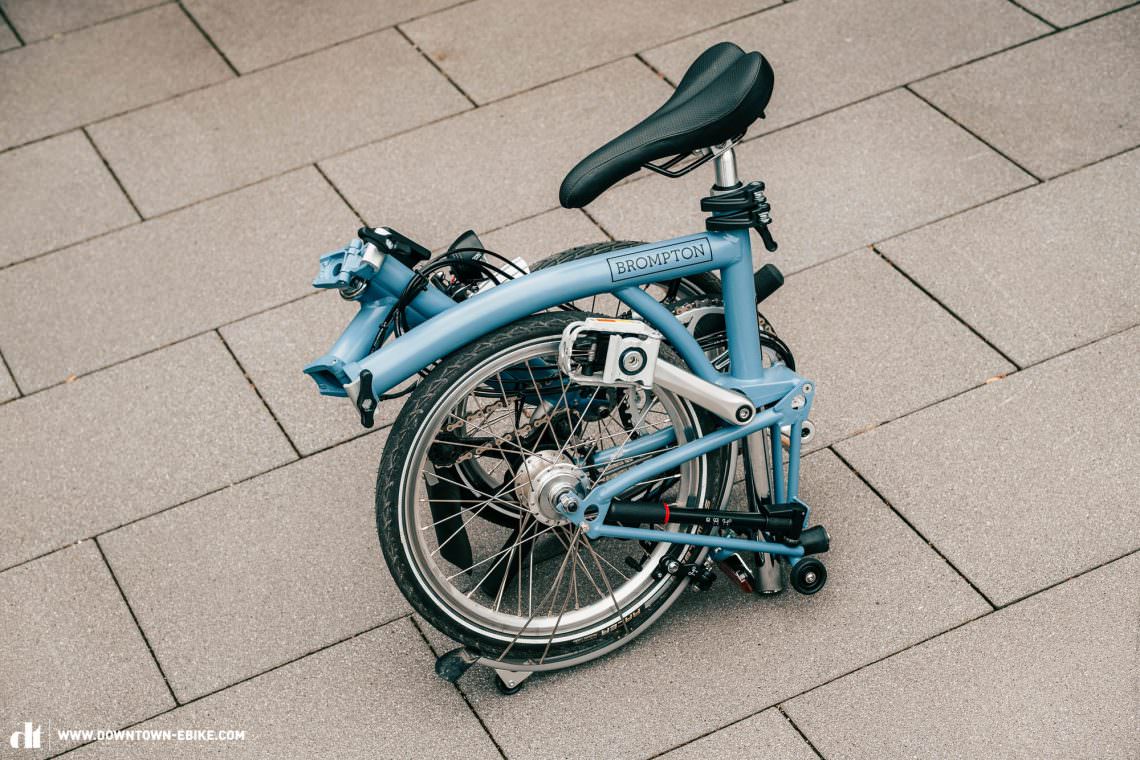
Folded together, the Brompton takes up just 59 x 56 x 27 cm and can be stood up on its support wheels.
| Size | L |
|---|---|
| Seat tube | 250 mm |
| Head angle | 72.7° |
| Seat angle | 72.8° |
| Chainstays | 411 mm |
| BB Drop | 65 mm |
| Wheelbase | 1,045 mm |
| Reach | 415 mm |
| Stack | 644 mm |
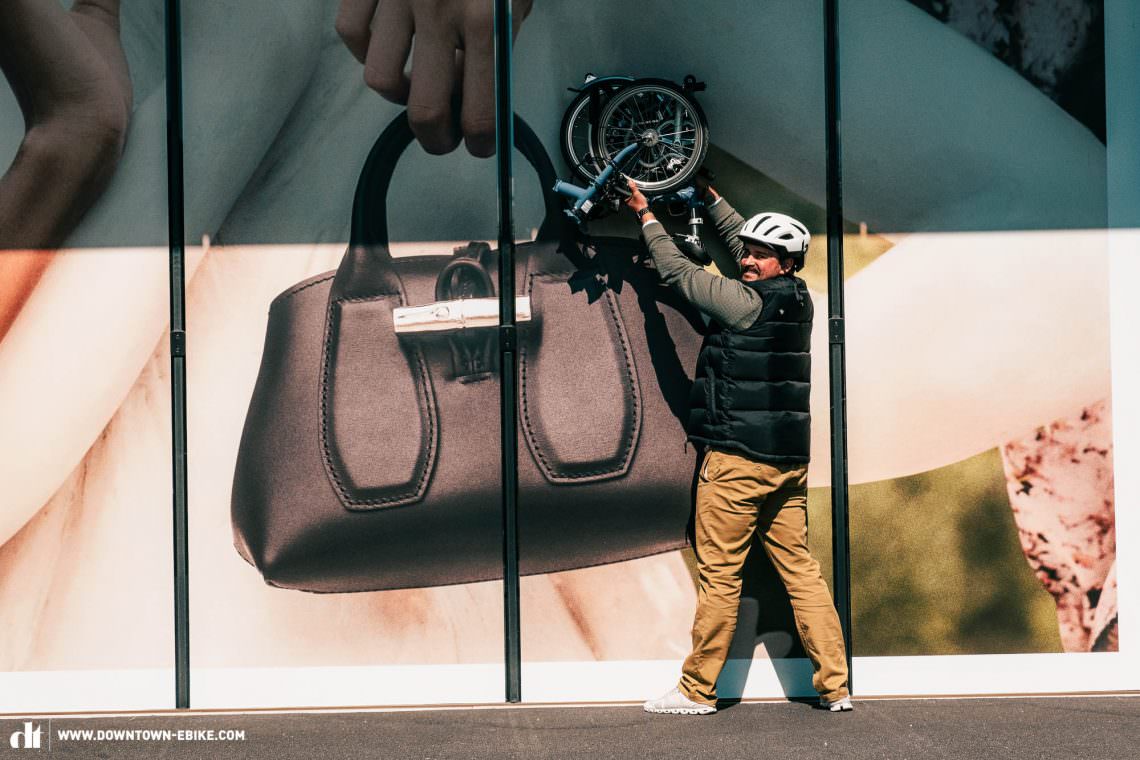
From bike to luggage in four steps
On average, every Brompton bike is constructed from 1,200 parts, many of which are manufactured specifically for their purpose by Brompton. All the more astonishing is the folding mechanism, which lets you fold the bike down to a size of under 59 x 56 x 27 cm in just four steps. The frame folds at 3 joints and unintentional opening is prevented by lowering the seat post. In this configuration, the bike can be easily transported and taken with you on the train or into the office. The bike has three small rollers on the rear mudguard and rear end, on which it stands in its folded state. And if you ever want to travel with it, then there’s even a special padded bag in which you can stow the Brompton. While the bike cuts a fine figure as a piece of luggage itself, options for luggage on the bike are limited. Up front, there’s a rack which, together with special bags designed for it, can take up to a 10 kg load. The R spec of the Brompton comes with an additional rear rack which can carry up to 10 kg.
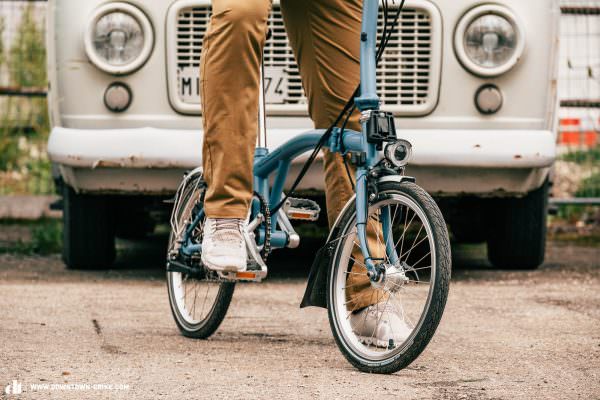
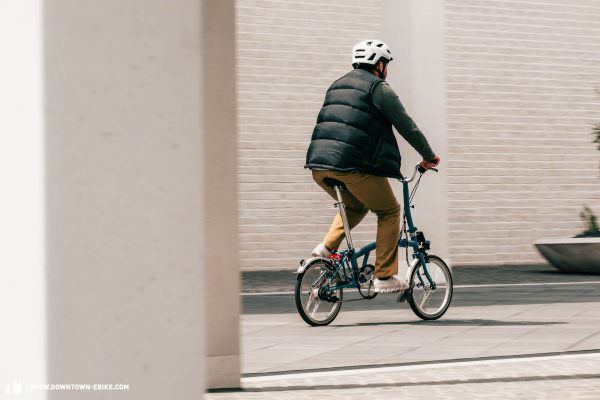
Brompton M6L on test
If you have hankering for a meal from your favourite restaurant four blocks away during your lunch break but don’t fancy walking, the Brompton comes to the rescue. Pulled out from under your desk, it’s ready to ride in less than a minute. You’ll feel immediately comfortable aboard the Brompton, with the high bars and long seat tube resulting in a compact and upright riding position. Together with the low standover height of the frame, it means that you can just as easily get on and off the bike. In busy city traffic, the Brompton scores with its great manoeuvrability and its simplicity results in a lot of enjoyment when navigating around obstacles. An elastomer insert contributes to comfort by cushioning blows at the rear.
Fold together by hand – isn’t there an app for that? The Brompton eschews high-tech and connectivity, instead offering British workmanship.
The flex in the stem ensures that your hands don’t get too shaken up either, not even from cobbles or slightly uneven surfaces. Despite noticeable flex in the frame and stem, components are securely fitted so that the Brompton doesn’t suffer from a noisy mess of clattering cables or mudguards. With just 6 gears, the M6L is missing the range to be able to surmount steep climbs – that said, it’s all the easier to push here. With its small and narrow tires and limited suspension, it’s not made for off-road tours or long trips. The rim brakes might be less powerful than the hydraulic stoppers on the competition, but they’re more than sufficient for inner-city use. Everything on the Brompton is made to provide active riders with a super convenient city bike for short rides – and in this category, it’s not easy to surpass the Brompton M6L.
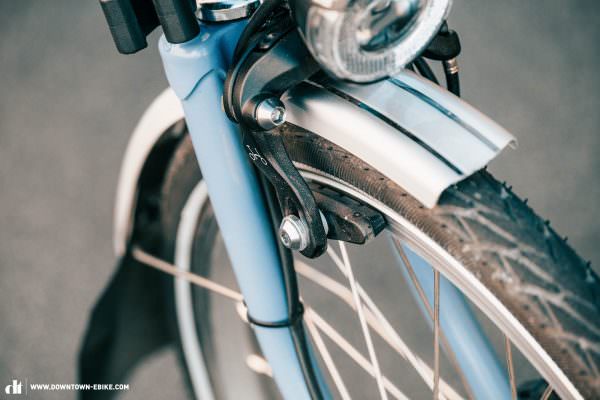
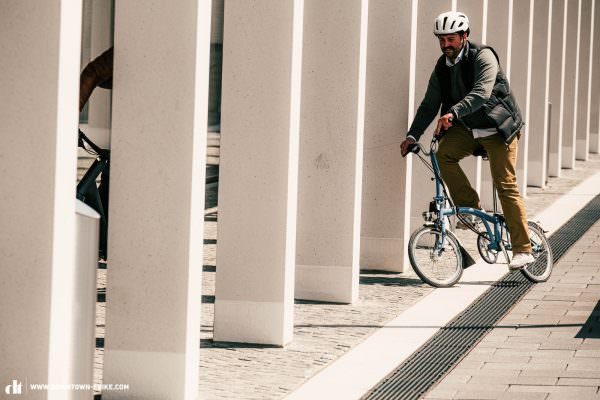
Tuning tip: The FREITAG F748 COLTRANE rucksack is purpose made for the Brompton’s front rack. It looks good both on you and on your bike.
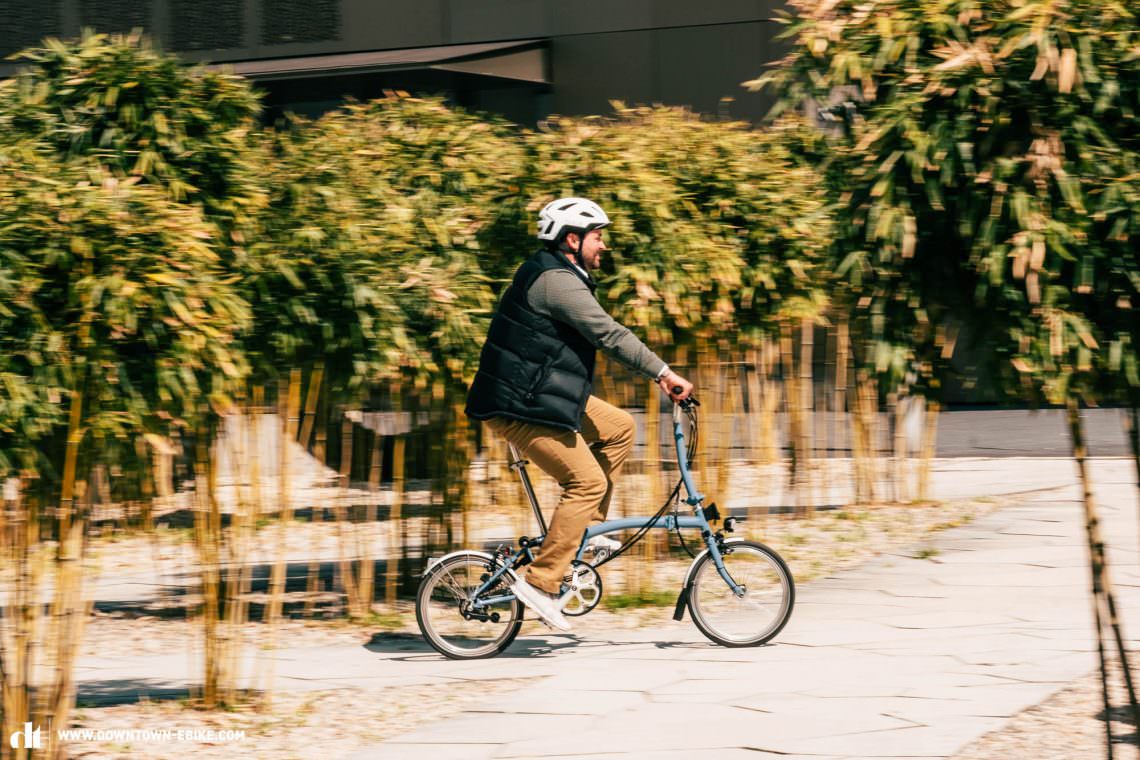
Brompton M6L conclusion
While the Brompton M6L started this race as the clear underdog, it was able to leave a lot of its competitors behind in city traffic. As the most affordable bike in the test, it also convinces in terms of value for money thanks to its consistent and coherent spec. Thanks to its handiness, clever folding mechanism and manoeuvrable handling, it is a fitting city and commuting bike for short journeys and everyone with an active riding style. It’s simply not conceived for any other purpose.
Tops
- great practicality
- genius folding mechanism
- high-quality finishing
- thought-through, detail-focussed design
Flops
- limited range of applications
- limited luggage options
Rider Type
6You can find out more about at brompton.com
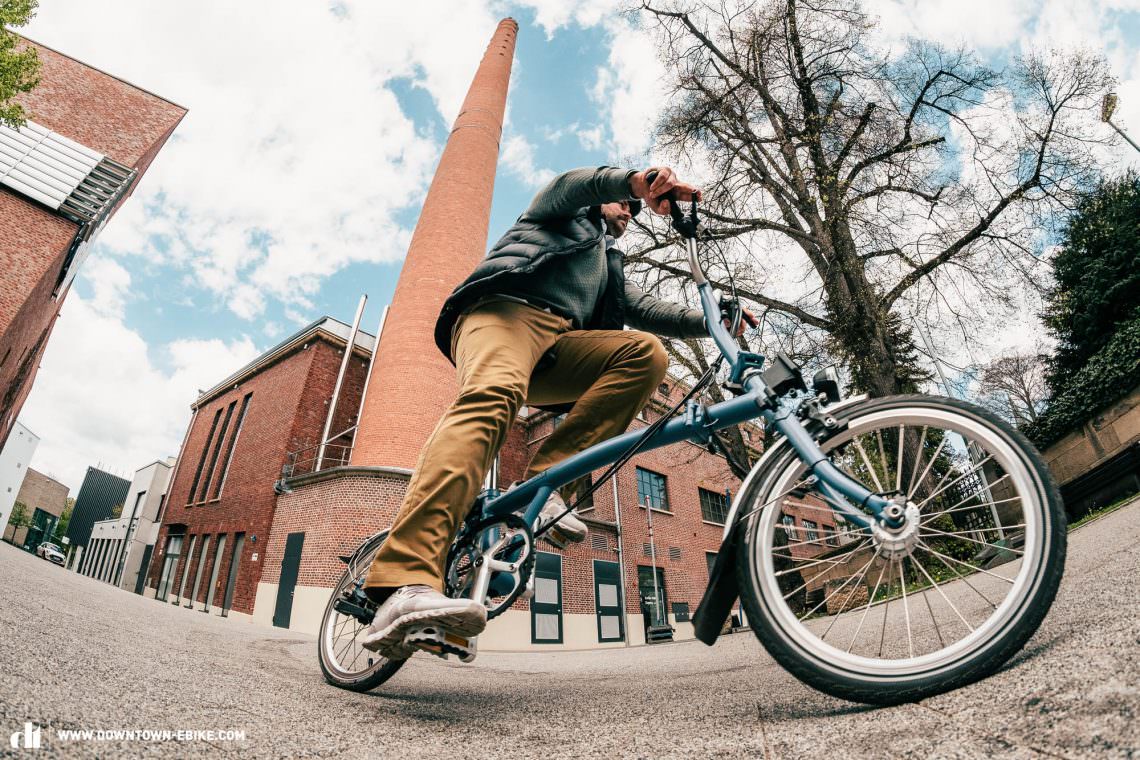
The testfield
Get an overview of the grouptest here: The best ebike of 2021 – The 19 most exciting concepts for everyday use
All Bikes in this group test: Ampler Stout (Click for review) | Brompton M6L Cloud Blue (Click for review) | Cannondale Topstone Neo Carbon Lefty LE (Click for review) | Canyon Commuter:ON 7 (Click for review) | Diamant Juna Deluxe+ (Click for review) | FEDDZ E-Moped (Click for review) | FLYER Upstreet6 7.10 HS (Click for review) | Haibike Trekking 9 (Click for review) | Kalkhoff Endeavour 5.B Excite+ (Click for review) | MERIDA eBIG.TOUR 700 EQ (Click for review) | MERIDA eONE SIXTY 10K (Click for review) | Moustache Samedi 27 Xroad FS 7 (Click for review) | Movea Modo 20” (Click for review) | Riese & Müller Homage GT Rohloff HS mit DualBattery (Click for review) | Riese & Müller Packster 70 Vario (Click for review) | Riese & Müller Roadster Touring (Click for review) | Schindelhauer Arthur VI/IX (Click for review) | Specialized Turbo Vado SL 5.0 EQ (Click for review) | VanMoof X3 (Click for review)
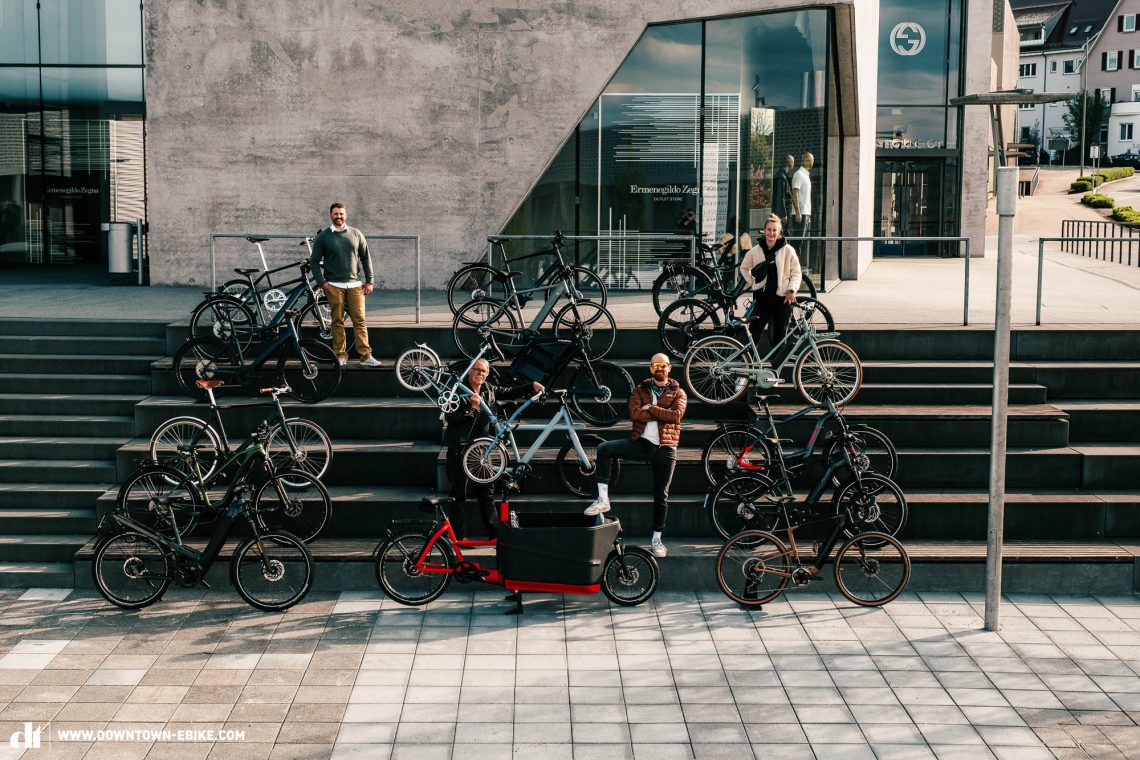
… or the regular long-distance commuters. Your usual commuting distance is more than 15 km each way and you use your bike every day. Your ebike is used as a means of transport and is a real alternative to a second car or public transport. Practicality, reliability and utility win out over the ultimate bling factor because it’s primarily a functional machine↩
This type of ebike unites experts and early adopters from both the fashion and tech scenes. As hip trendsetters, they know exactly how to ride with style. Sci-fi, hi-fi, Wi-Fi – they know exactly what they’re talking about and can easily play the keyboard while half asleep. With a tendency to live out their passions eccentrically, emotional decisions come before rational ones.↩
Take the kids to kindergarten, head to the weekly market and later get a crate of beer – no problem for this type of ebike, even without a car. These riders love to combine things: rational and emotional motives go hand in hand because investments are made on the basis of knowing what they want and getting a suitable vehicle that suits their vision and mission.↩
You live in a 15-minute city like Paris. This means that all your daily needs are within a 15-minute radius by foot or ebike. For short distances of less than 2 km, you aren’t afraid to simply walk. For medium distances of up to 10 km, you get on your bike. Longer distances are easily covered with a mix of public transport and your bike. Short-distance bikers are active/sporty people who never want to commit to one thing, maintain a flexible lifestyle and like to be inspired by impulses. Due to limited space in the city, they often don’t have a car and if they do, it is mainly used for pleasure.↩
You have significant biking experience and enjoy riding sportily. This group encompasses mountain bikers and trail shredders, road bike fans and Strava heroes, as well as touring fans who enjoy (rural) excursions into the countryside outside the city. You change into sports gear for your daily commute before showering when you get there because you enjoy working on your fitness. Your bike is used for commuting during the week as well as for tours at the weekend and is a means of transport and sports equipment all in one.↩
Learn more about the different rider types in this article: Click here! ↩
Words: Rudolf Fischer Photos: Valentin Rühl, Benjamin Topf


